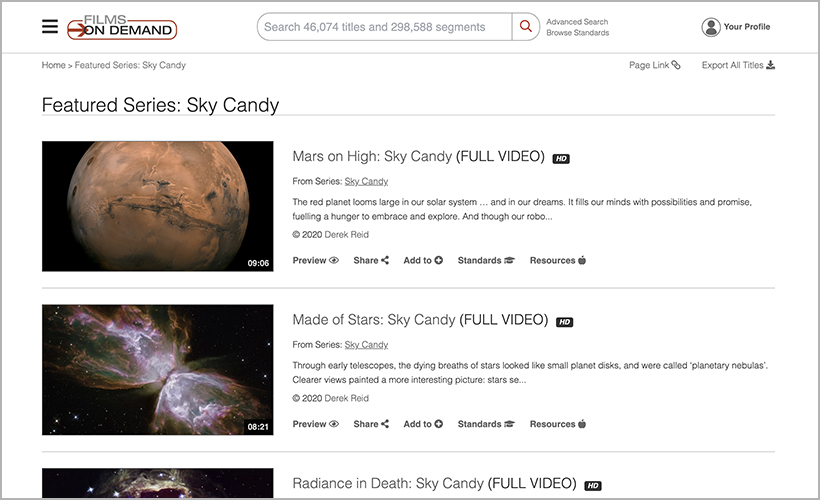Returning to the Moon is key to our future in space. Some argue it is key to humanity’s future.
The sun sets and the light dims, carrying our thoughts away from daytime cares to nighttime dreams. Dreams of a cosmos so grand that we cannot help but stand in amazement and wonder: Where did it all come from? How do we fit into that incredible history? Wonder reflects our gaze back, and we begin a grand journey of thought and discovery. Our travelling companions? The stars, the planets, the galaxies … and the Moon.
Fortunately, there is a plan to return to the Moon. And at the center of that plan are the high-tech eyes of the Lunar Reconnaissance Orbiter, or LRO.
While Earth dances with color, the Moon is a cold and lifeless grey. But these two bodies are forever linked, their histories winding together through time and space. The Moon is the first object most of us notice in the night sky. Its phases quietly organize our lives and the constant tug of lunar gravity helps shape our planet. But the Moon also pulls on our minds, beckoning us to reach the unreachable.
For a Short Time, We Did
Twelve humans have walked on this alien surface. Those visits accomplished many things for science, technology, and humanity. But they were just a tease. Short-lived, and long ago. Very small steps indeed. Returning to the Moon is key to our future in space. Some argue, it is key to humanity’s future. Fortunately, there is a plan to return to the Moon. And at the center of that plan are the high-tech eyes of the Lunar Reconnaissance Orbiter, or LRO.
Snapping detailed images of mountains, rilles, and scarps, down to the smallest boulder, the LRO is constantly on the lookout for potential landing sites. The most famous lunar features are craters. Most of its surface is covered with these impact sites.
Tycho Crater
This crater is easily spotted from Earth. Even to the unaided eye, the rays emanating from Tycho brighten a good portion of the Moon’s southern hemisphere. Craters like this one are fascinating, but the rocks and boulders ejected by the impact that formed it can be potential hazards to delicate moon landers. These ejected materials do help us with another problem for future moon dwellers: just how often is the moon hit? The key is that newer craters fling ejecta over older ones, and the overlapping material can help determine the frequency of impacts.
Before we can start building lunar bases, we have to get humans back to the Moon first. This time, with a plan to stay.
As the LRO scouts future landing sites, it sometimes comes across old ones. The Apollo 15 astronauts landed at Hadley Rille and looked out onto the towering Apennine mountains. One of the Falcon module’s footpads ended up in a small crater, pitching the lander at a dangerous angle. Just a bit more tilt, and the astronauts could have been stranded on the Moon forever. The detailed map LRO is giving us, down to the smallest craters, will be vital to avoid future disasters … and near misses.
A World of Resources
Loaded with cameras and sensors, LRO orbits the Moon, revealing its deepest secrets. And LRO isn’t just taking pretty pictures. Its multispectral scanners map minerals. The mineral ilmenite contains both oxygen and titanium. Its oxygen could be extracted to support life, and the titanium is an extremely strong, light building material. Having ilmenite nearby would be handy for a future lunar base.
But before we can start building lunar bases, we have to get humans back to the Moon first. This time, with a plan to stay. Or perhaps, to launch ourselves even further, using the Moon as a stepping stone to Mars, and even deeper space. The Moon is both smaller and less dense than Earth. This means launching from the Moon takes far less energy than leaving Earth. Add to that the low gravity and lack of atmosphere, and you have an excellent environment for constructing space-faring vehicles.
The Moon, with its stark but magnificently beautiful landscapes, continues to summon us towards the next frontier. It is our first companion on a grand journey of discovery. Travelling with us and guiding us, as we take our initial, tentative steps into the cosmos.
Special thanks to Kirsten Vanstone for her astronomical contribution to this Star Blog.
Originally published on Sky Candy Astronomy.
Explore Space with Sky Candy

Blog author Derek Reid is the director, editor, and executive producer of Sky Candy (2020), an astronomy documentary series that reveals the true nature of the cosmos in all its complexity and beauty. Sky Candy is available on the following streaming video platforms (except in Canada):
- Films On Demand for colleges and universities
- Access Video On Demand for public libraries
- Classroom Video On Demand for secondary schools
What Is Films On Demand?
Films On Demand is a multidisciplinary, research-focused streaming video service providing unlimited access to thousands of videos, all carefully curated with a single guiding principle: provide every academic department on campus with the most essential video content for their field of study. At Films On Demand, we know that content matters. Our video library has been assembled not just with a focus on volume, but also with a discerning eye for quality and relevance. Plus, Films On Demand‘s platform provides users with the content, tools, speed, and performance that today’s online experience demands.
What Is Access Video On Demand?
Access Video On Demand streaming video offers public libraries an expansive, patron-friendly collection of thousands of high-quality videos that complement and enhance your library’s content offerings. We bring your patrons exceptional content from around the world that they may never have had the opportunity to see: from Oscar®, Emmy®, and Peabody Award-winning documentaries, to how-to programs that make life easier and richer, top-quality performances spanning the arts, biographies of history-makers past and present, a variety of TV shows and movies, and more.
What Is Classroom Video On Demand?
Classroom Video On Demand—created for middle and high schools—is a curriculum-focused video subscription providing unlimited access to thousands of videos for ALL departments. This fully responsive and mobile-friendly multisubject solution is an exceptional value and offers one-stop shopping for librarians and educators, with a wealth of material appropriate for basic through AP courses.
Take a FREE TRIAL of Films On Demand, Access Video On Demand, or Classroom Video On Demand today!
See also:
- FREE Infographic: Inspiring Women of Science & Technology: Yesterday and Today
- Promote Mental Health Awareness with These Video Resources
- Honor Women’s History with Infobase
- 5 Great STEM Career Paths in 2023
- Video: Content Conversations for Educators: Andrew Kaplan Discusses Walt Whitman
- Video: Take a Dive into the World of Mental Illness—Bellevue: Inside and Out



